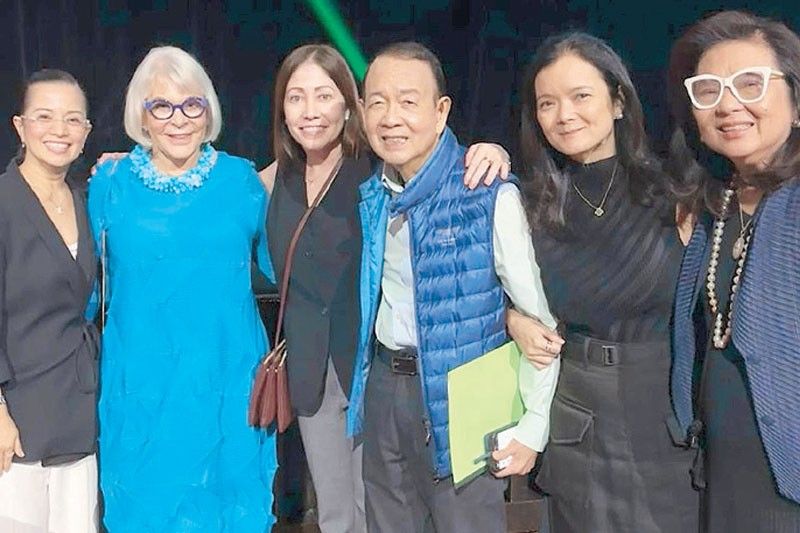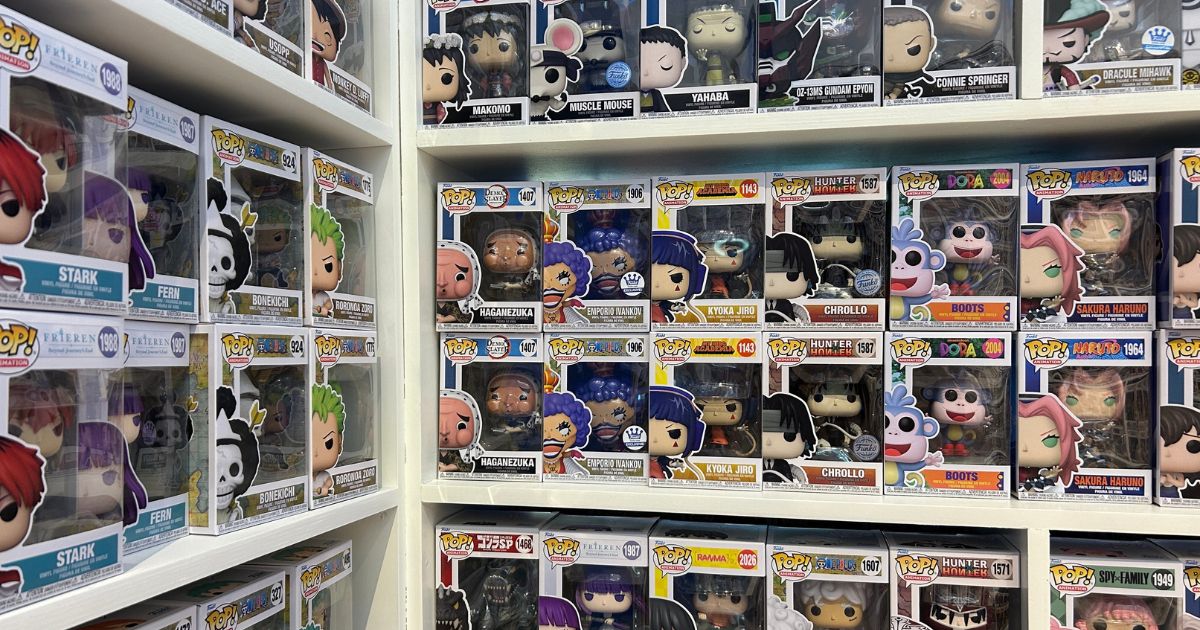
Upgrade to High-Speed Internet for only ₱1499/month!
Enjoy up to 100 Mbps fiber broadband, perfect for browsing, streaming, and gaming.
Visit Suniway.ph to learn
‘With every cup, with every conversation and every community, we nurture the limitless possibilities of human connection,’ was their mission. Starbucks Philippines, which began in 1997, now has 479 stores.
Starbucks is the most iconic coffee store in the world and it has played a big role in my life. It’s not always about the coffee. It’s about having a place to do what I need, enjoy my caffe latte and multiple trips back to the counter for yogurt-soaked granola and cookies. As a mom who drove her kids to school, it was a space where I would bring my laptop to work or bead a section of my daughter’s debut gown. There is something about the vibe that is conducive to both work and chilling out.
We were very fortunate to have Howard Behar in town recently, the retired president of Starbucks Coffee Company North America and Starbucks International. He came on board when there were only 28 branches and grew it to 15,000 in over 80 countries.
Here in the Philippines, we have 479 stores, beginning in 1997, with the first branch located at 6750 along Ayala Avenue. Significantly, Starbucks Philippines was the third market to open outside North America. Their mission is that “with every cup, with every conversation and every community — we nurture the limitless possibilities of human connection.”
With this phenomenal growth, it’s amazing to learn from Howard Behar that it’s not about the coffee. That’s also the title of his bestselling book, which is about the brand of servant leadership that propelled Starbucks forward.
“We’re not a coffee company serving people, we’re a people company serving coffee,” is one of his most famous sayings.
We had a chance to listen to Howard expand on servant leadership recently at the Newport Performing Arts Theater, in a talk that was moderated by Starbucks Philippines president and CEO Noey Tantoco Lopez. His father Jun Lopez is the one who started Rustan’s Supermarket in 1970 and was able to bring Starbucks over in 1997.
“I have this saying, and it’s an equation,” Howard explained when Noey prompted him about his concept on training people. “You grow the people, the people grow the organization and the organization grows with them. You don’t train people, you educate and develop them. You train pets, you train dogs and cats.

“The goal is not just to get people to follow the rules, the goal is to get people to grow as human beings, that’s number one; to grow as professionals, that’s second. Then as a servant leader, you have a responsibility to help your people reach their goals in life and if you do that, everything else works.”
Growing up as the son of immigrants, with his dad from Bulgaria and his mother from Latvia, he never forgot where he came from. His parents had a mom and pop store in Seattle and family was very important to them. One time, his father’s brother-in-law helped him with a US$700 loan that kept him from going bankrupt. Another time, he noticed his father attending to a customer and he didn’t ring up some strawberries on the cash register. When Howard told his father he had forgotten the strawberries, his father said, “Not everything you do in life you need to be paid for. These customers love fresh fruits but don’t have too much money now, so I’m just helping them out.”
One of his remarkable stories has to do with a manager named Dina from the Santa Monica area who managed 10 stores. She invited him to come visit, took him to a competitor’s store and bought him a drink.
“She said that every day, people were coming in asking for a beverage like this and we didn’t have anything like it,” he recalls. Howard then brought it up with a man named George who was the head of product development back at the company’s base in Seattle.
“George said, ‘Howard we’re in the coffee business, that’s not something we’re going to sell.’ But three weeks later, Dina called me again and she said she wanted to show me something,” said Howard. “So I went back to the 3rd street Promenade store in Santa Monica, California, a big tourist destination store, and Dina served me three little samples.

Coffee talk with (back row, from left) Junjun Lopez, Rico Tantoco, Howard Behar, Donnie Tantoco, Jun Lopez. In front are Nena Tantoco, Lynn Behar, Menchu Lopez
“I said this tastes remarkably like that beverage you bought me at one of our competitors. Are you trying to get me fired? But Dina said please let us try this.
“Well it’s one of those times in all leaders’ lives when you make a decision that goes against the grain of the organization, something tells you no, but you do it anyway,” Howard continued. “I said to Dina, you can try it but don’t tell anyone. How many do you think you can sell in a day? She estimated we would sell 30 drinks per store.
“Call me every night and tell me how many you sold,” he instructed her. “First week, they sold 50 drinks a day per store. The following week, they sold 70 drinks a day per store, and I was thinking to myself, ‘Howard, you’re a genius.’ I invited Dina and her people to come up to Seattle to present the drinks again. Everybody was there, including George, the product manager, and Starbucks chairman and CEO Howard Shultz. George went up to me, pointed a finger at my nose and said, ‘Behar, I told you we were not going to do this. Howard (Shultz), you tell him to stop.’ So I looked at Howard, and I had this piece of paper with all the numbers on it and asked for 90 days. I said if it didn’t sell, we’d get rid of it. But I’ve been in retail all my life and if you have something that sells, you won’t get rid of it.”
What was the drink? The frappuccino, which now accounts for US$4 billion annually in sales. This prompted another famous saying of his, “The person who sweeps the floor should pick the broom.” That’s because he believed Starbucks employees knew best what they needed.
Howard Behar’s people-centered, servant-leader approach helped propel Starbucks to what it is today. He sent every Starbucks employee a greeting card on their birthdays. And in difficult times, he was not afraid to get counseling.
“You have to help yourself because if you’re not okay with you, it’s difficult to help someone else,” Howard later told me at the Starbucks branch at Newport. “Like when you cut your hand, you get help. It’s not a sign of weakness but strength.”
How do we lead others? “Well, the first question is how do we lead ourselves,” Howard said. “We have to know who we are as individuals. I have a saying that we need to wear one hat. As human beings, we need to know what our values are, what are the things that matter in life. I have a document that I call a ‘picture of Howard in 50 words or less.’ It has my personal mission statement, has my six Ps and I look at it every day.”
Howard’s values are honesty, trust (giving it first to earn it), love (giving it first to earn it), empathy, vulnerability (being able to own it when you make a mistake). His six Ps are purpose, passion, patience, persistence, performance and people.
He explains, “You’d better be passionate about your purpose in life. You need to be patient with yourself and with others. You need to be persistent, and you need to perform, that is, deliver what you’ve committed to do. And, of course, people are the priority.

Cupfuls of passion from Angela Lopez, Starbucks VP- Operations; Lynn Behar; Isabel Cacho, Starbucks VP-HR; Jun Lopez; Maricar Tiangco; Menchu Lopez
“My mission statement goes like this, and Starbucks people will recognize it. ‘Every day, I want to nurture and inspire the human spirit, beginning with myself first and then for others. My job on this earth is to serve you.’ People say they get burned out, but you never get burned out serving others. You may get tired and we all get tired. But you don’t get burned out serving another human being.”
Apart from the quality of servant leadership that values employees above profit, how did Starbucks expand worldwide?
“I went to Howard (Shultz) and I said let me start Starbucks International. Take it out of North America. I was on the board at that time and I had to get permission from the board and, of course, from Howard. I had to prepare a business plan.”
But as this humble man explained, “I didn’t have a college degree so I didn’t have an MBA. I didn’t have the keys to get it across the board, so to speak. So I went to Bain and Company which is a big consulting firm. I told them I have US$50,000 to spend. For Starbucks at that time, US$50,000 was a lot of money, but for Bain, that was nothing. They didn’t even talk about if you didn’t have US$100,000 or US$200,000, but I convinced them to help me create a business plan and I got people from inside of Starbucks to help me work on it.
“I came to a board meeting and presented the business plan to take Starbucks outside of North America, and my pitch was to take it to the UK and to Japan simultaneously. The board was a little nervous about that, they said you can take it to one or the other but you can’t do both. So I chose Asia Pacific because Seattle is a Pacific Rim city and you can take a container to Japan in a week. You can’t take it to Europe in a week because our first roasting plant was in Seattle so I got approval and the rest was history.”
Howard now spends his retirement years traveling the world to give motivational speeches. The best part of his day last week was talking at Newport, to an audience made up of many Starbucks managers and employees.
“I feed off the energy from the audience,” he said with a smile. “They are great.”
“When we sat there in the beginning and started with a prayer led by Jun Lopez, that prayer was about serving others. I’m Jewish but I know a lot about Christianity and Jesus. What was Jesus’s primary message? It was about being of service to others, no matter who they were, the color of their skin.”
When I asked him about the best part of his every day, he answered that it was getting a smooch from his wife Lynn and an “I love you” in the morning. He enthusiastically said his wife is much smarter than him, being a social worker who has written visionary books for the University Washington School of Social Work.
“We take care of each other,” he said, as he looked at her seated in the next table.
What lies ahead for this man, still tireless at 80? “My goal now is to continue doing what I’m doing. I want to change the world, one person at a time.”

 3 months ago
27
3 months ago
27

_2025_06_26_18_50_25.jpg)

